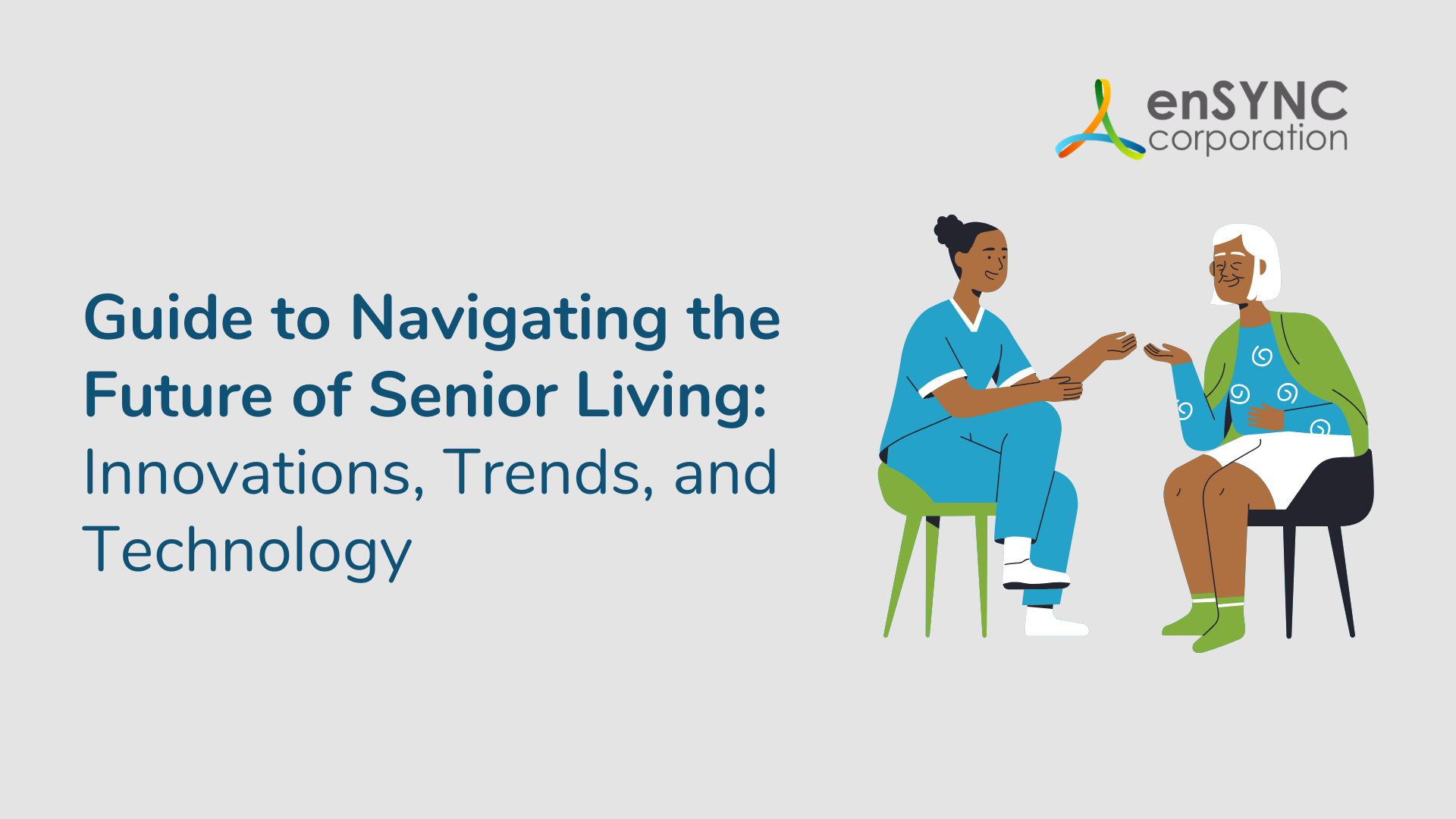Strategy & planning | Nonprofits & associations | Member engagement
How to Measure Engagement
November 5, 2018
|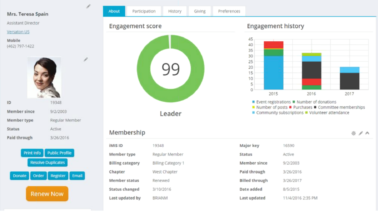
iMIS is known as an Engagement Management System. With the tools supplied in iMIS 2017 (20.2.64 or higher) you’ve got it all at your fingertips. Because most of enSYNC’s clients are on iMIS, we thought we’d review the ease with which you can develop an engagement scoring system there, but the concepts will be useful regardless of your AMS.
iMIS
Built in to any good AMS platform should be the ability to track activities between the member and your organization. In iMIS these are easily tracked in one or more of the modules.
Examples of activities most organizations track are:
- event attendance
- product purchases
- volunteer hours
- community subscriptions
- number of donations
- recent logins
- committee attendance
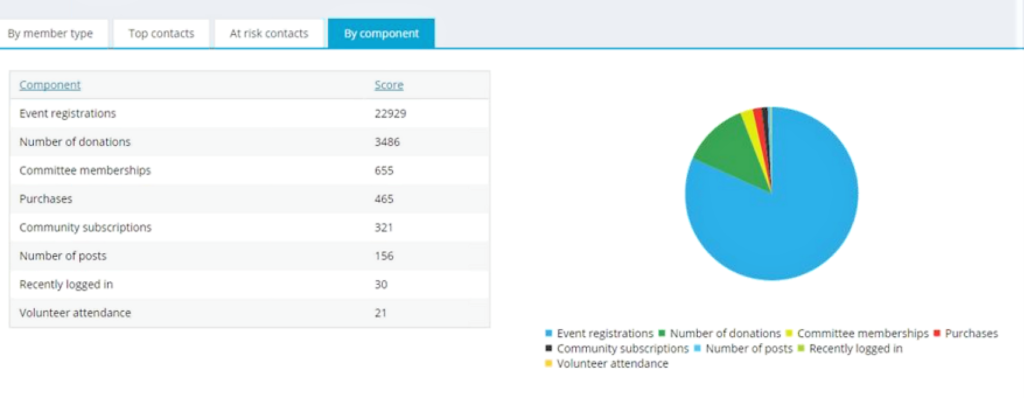 This dashboard shows overall engagement of all members.
This dashboard shows overall engagement of all members.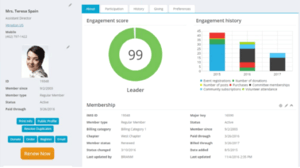 An engagement score from a members point of view.
An engagement score from a members point of view.You likely can think of your own set of activities that go in to making an engaged member. And this, in fact, should be your first step in an engagement scoring project. (As a corollary, should you be tracking information in a third party software that is not in iMIS, you should consider developing a method for bringing that information in via API so that it becomes available for engagement measurement.)
Refining your scoring system
The next step is refining your scoring system -- weighting the relative value of these activities by giving it a unique multiplier. For example, an in-person event may be more worthwhile to you (either because it affords better participation among members or because of its revenue value) than a webinar registration. Therefore, you might give annual conference registration 10 points and a webinar 1 point.

Grouping engagement scores
Grouping engagement scores by percentile or total score is next, allowing you to define related categories. Percentile really makes more sense as a way of evaluating engagement because you can compare people in your organization to each other. For example, you might define these categories and assign them as score as follows:
- Users – percentile score > 1.0
- Participant –percentile > 20.0
- Connector –percentile > 60.0
- Contributor – percentile > 80.0
- Leader – percentile > 85.0 and event registration >6.0
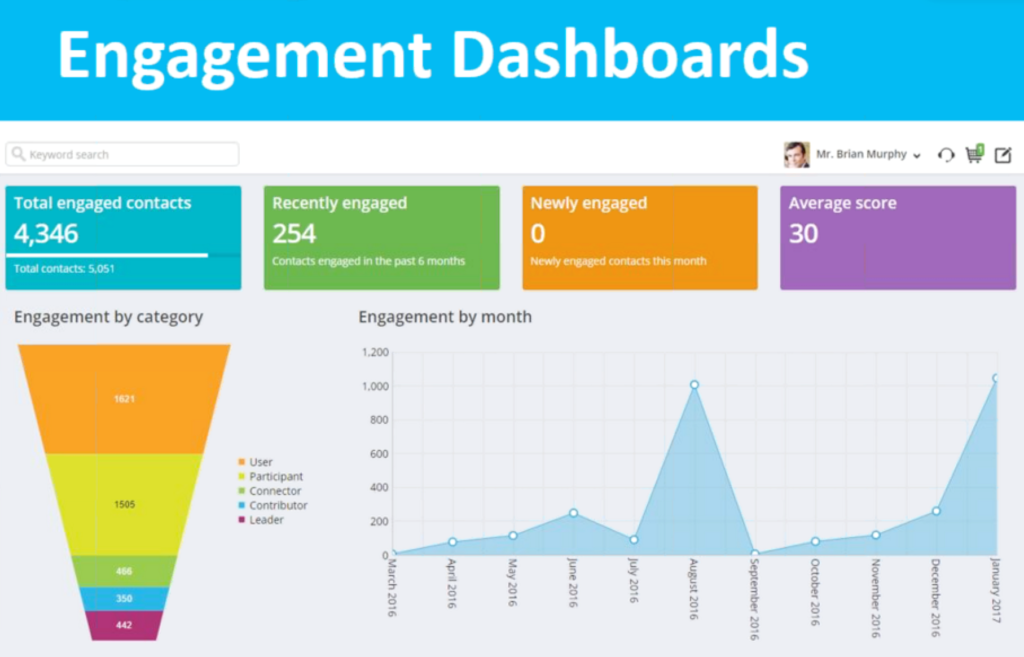
Organizations, as well as individuals, can be scored. In this case, all members associated with a particular company are rolled up into a total company score.
We talk about “engagement scoring”, but really with a scoring methodology you would be able to score other kinds of programs.
For example, you could extend the use of a scoring module to:
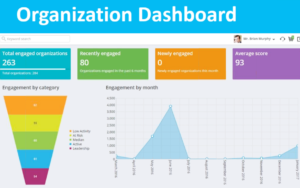 Companies can have an engagement profile that includes all members associated with their organization.
Companies can have an engagement profile that includes all members associated with their organization.- measure compliance
- predict donation
- perform outreach to under-represented groups
- market to likely event registrants
Because once you have this score, you have the ability to make data driven decisions. Or consider better segmenting members for marketing efforts, simply by creating queries that define groups – “all members in the contributor group,” “all members with a score between 40 and 60,” “all members with a low education participation score.”
To our iMIS clients, we ask – wouldn’t this be an absolute excellent way of managing better data decisions. It’s within your reach if you have iMIS 2017 or higher!
Recent Posts
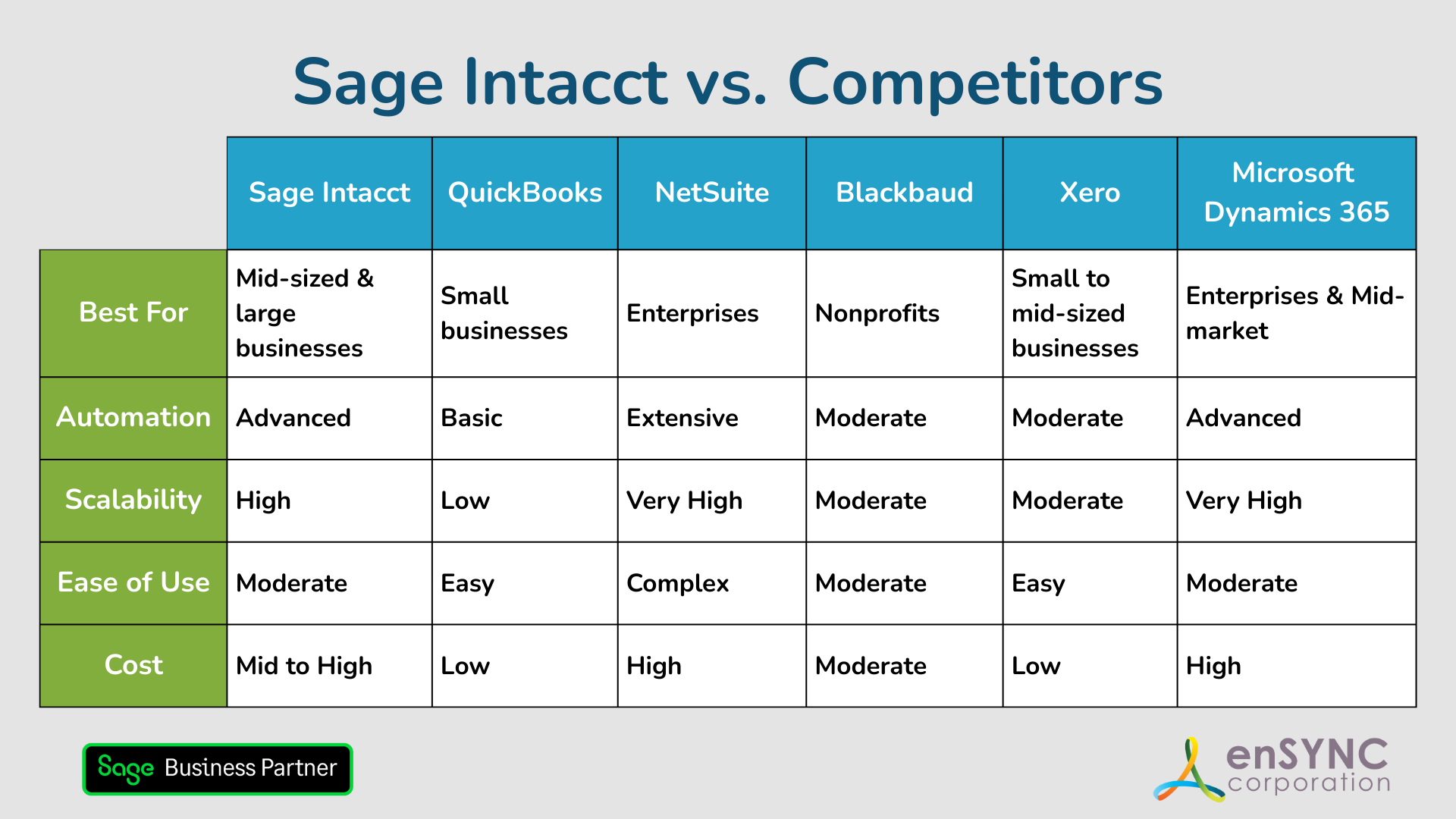
Sage Intacct vs. Competitors: Finding the Best Accounting Solution for Your Nonprofit
Choosing the right accounting software is a critical step for any organization — and a deeply personal one, too. How to choose the accounting...
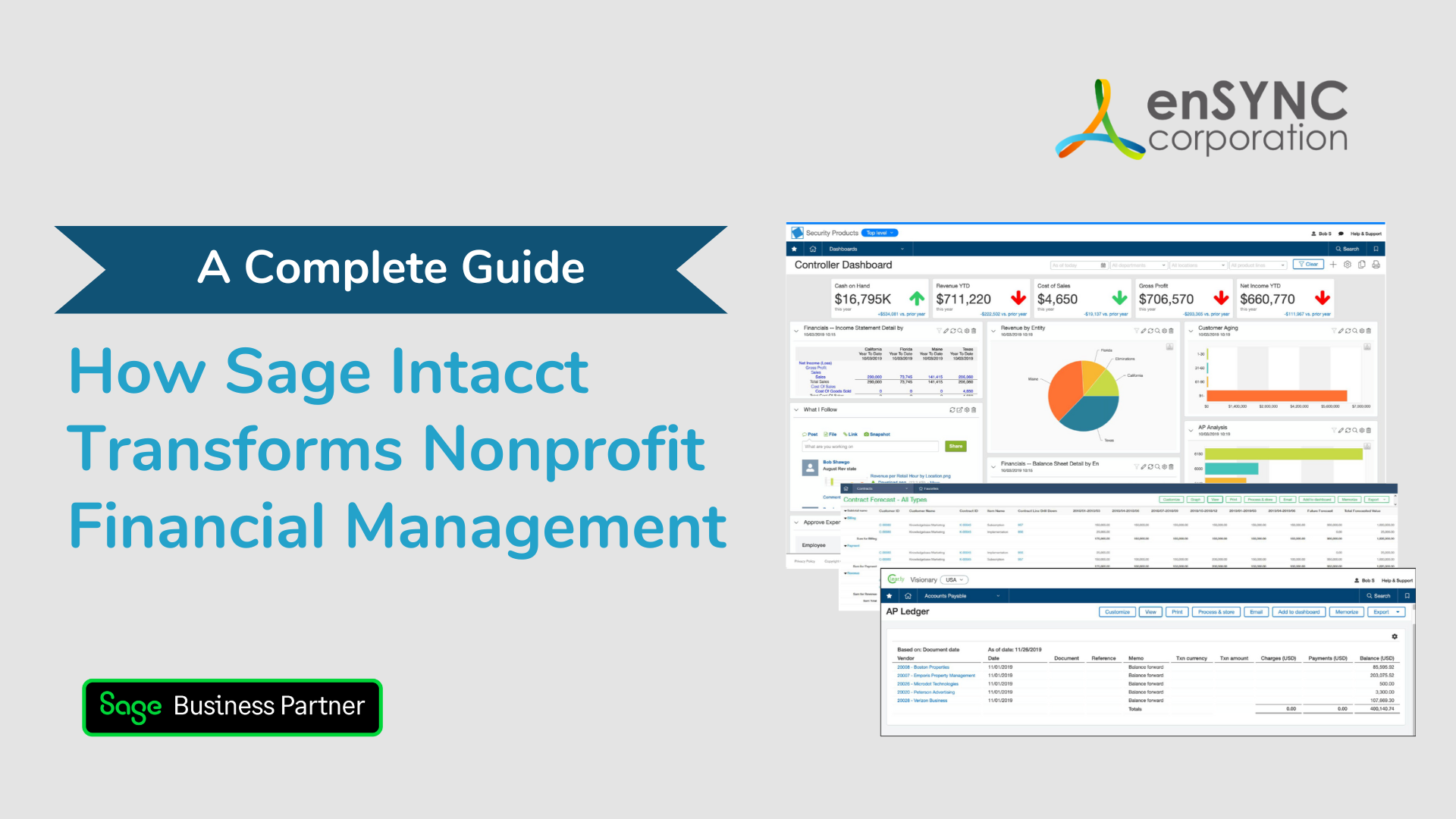
How Sage Intacct Transforms Nonprofit Financial Management: A Complete Guide
Staying on top of financial management is crucial for all businesses, especially nonprofits. Nonprofits often have limited resources and handle...
Enjoying our blog?
At enSYNC, we want to empower associations and nonprofits to make well-educated decisions. If you want our industry knowledge (and other free guides) sent directly to your inbox, fill out the form below.


